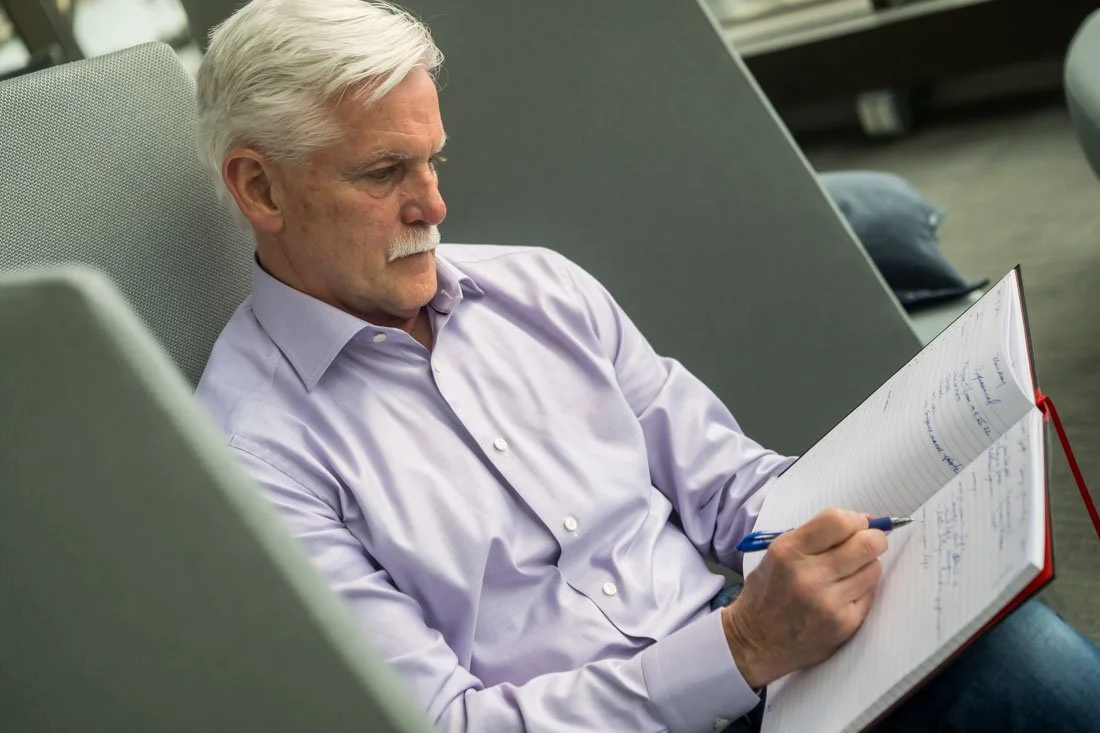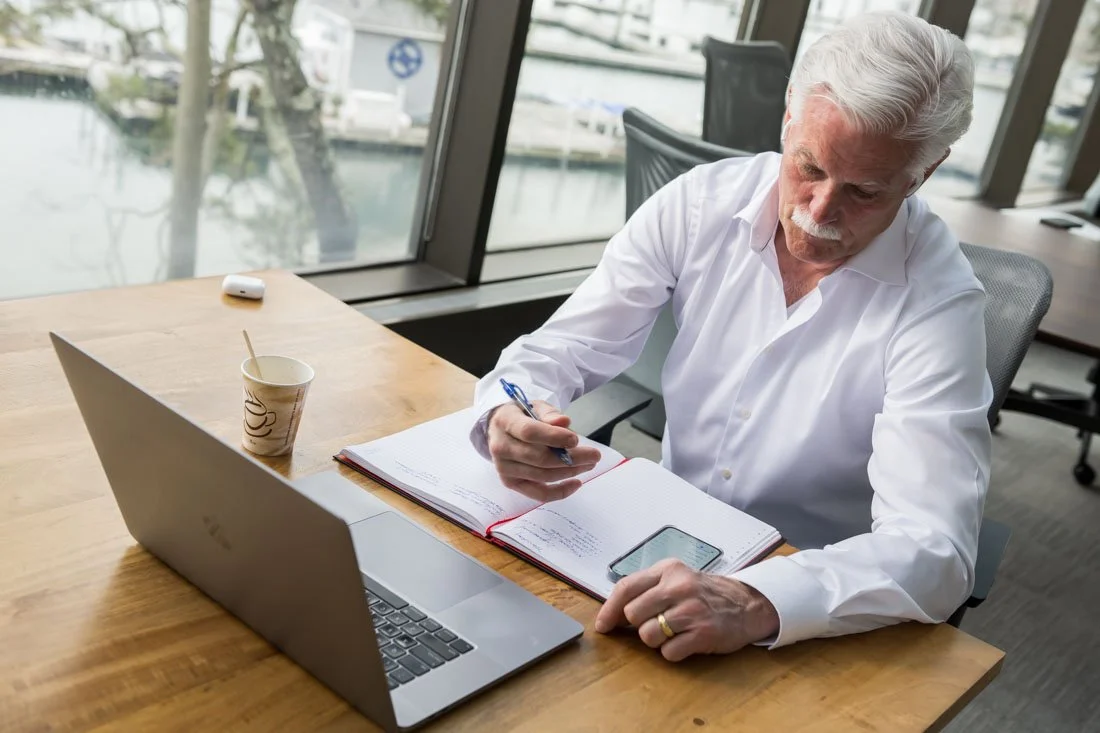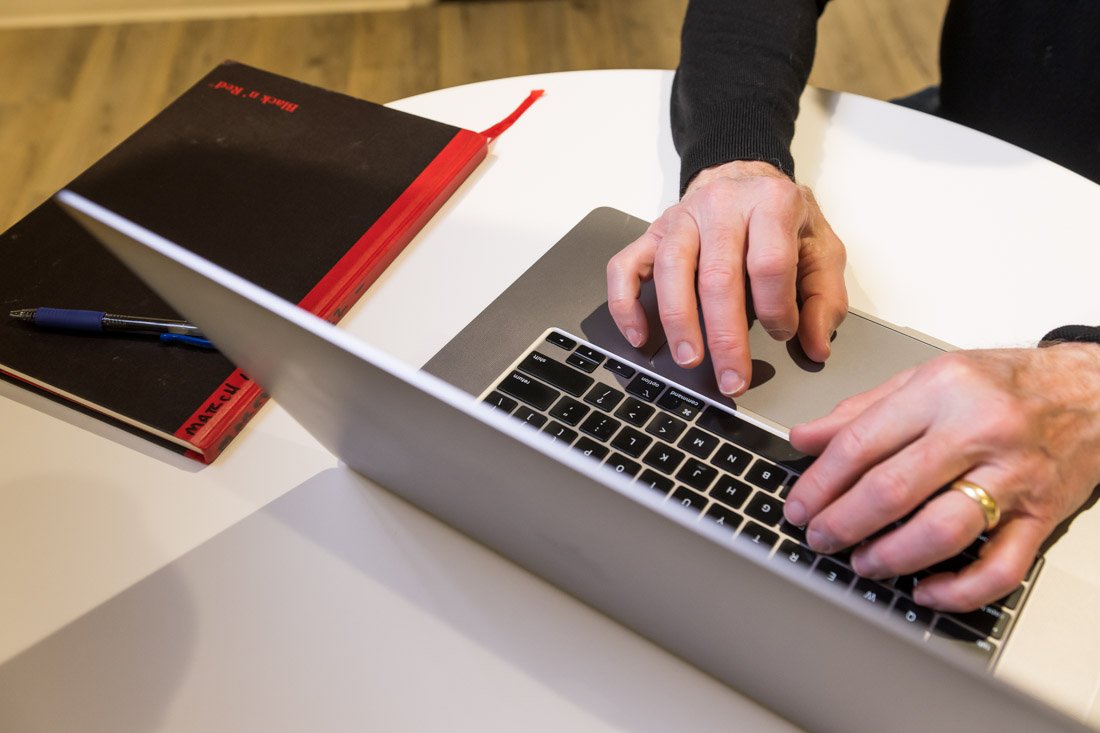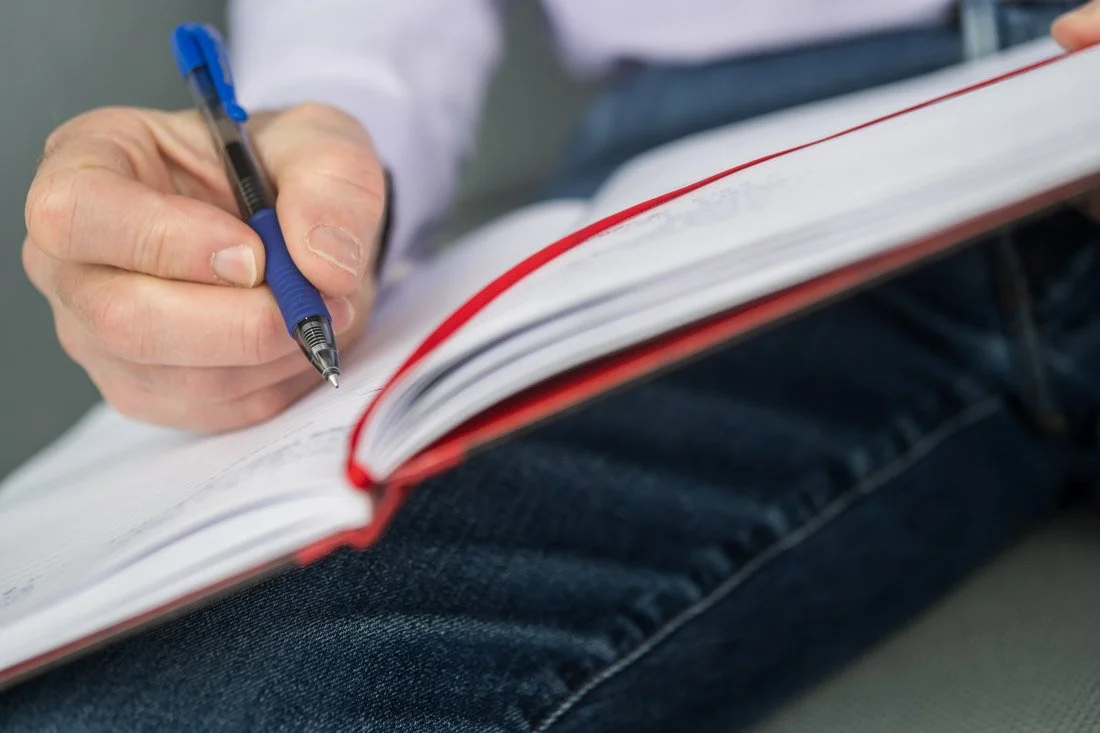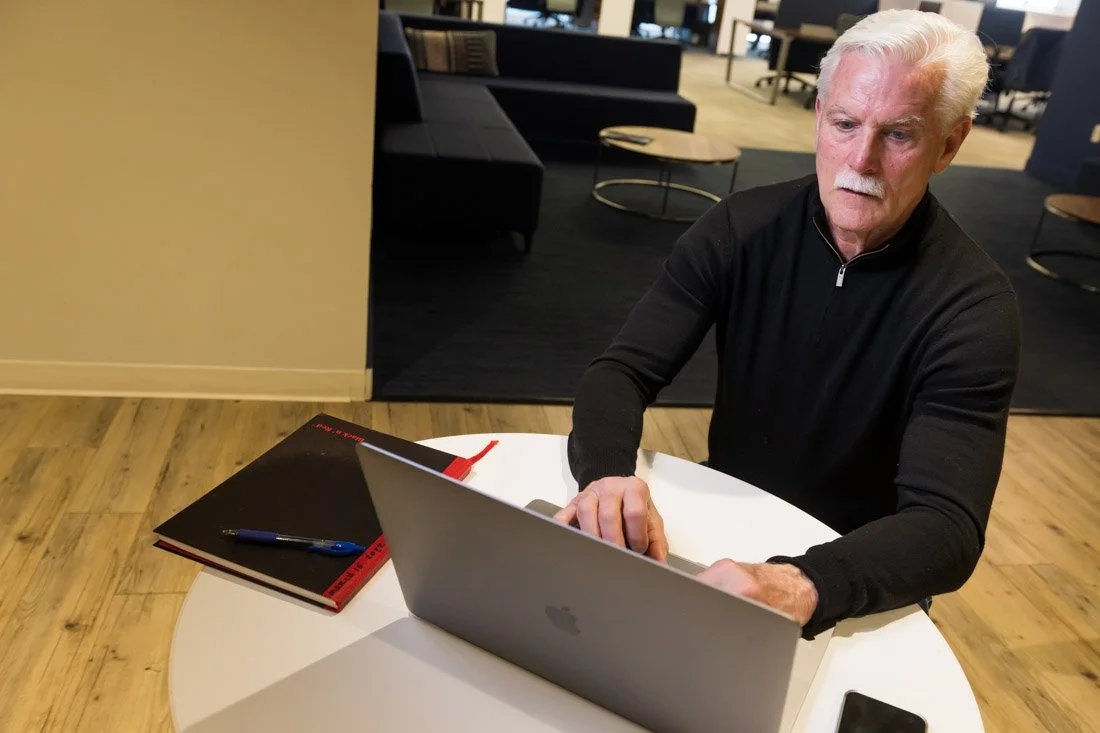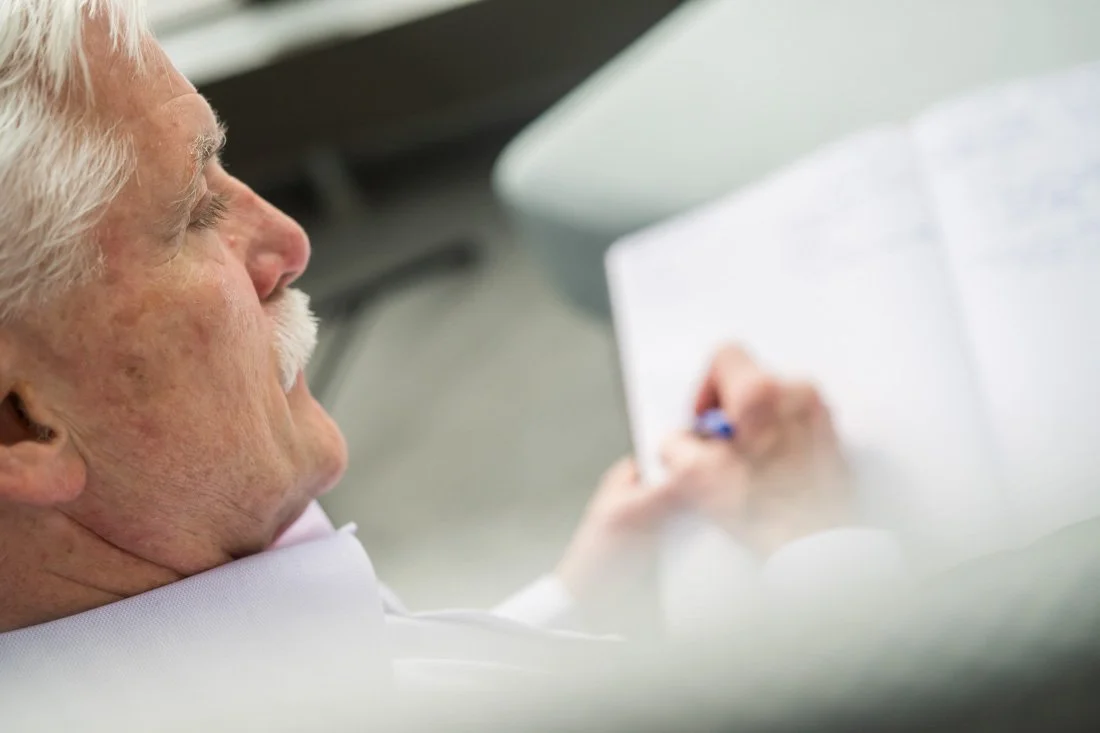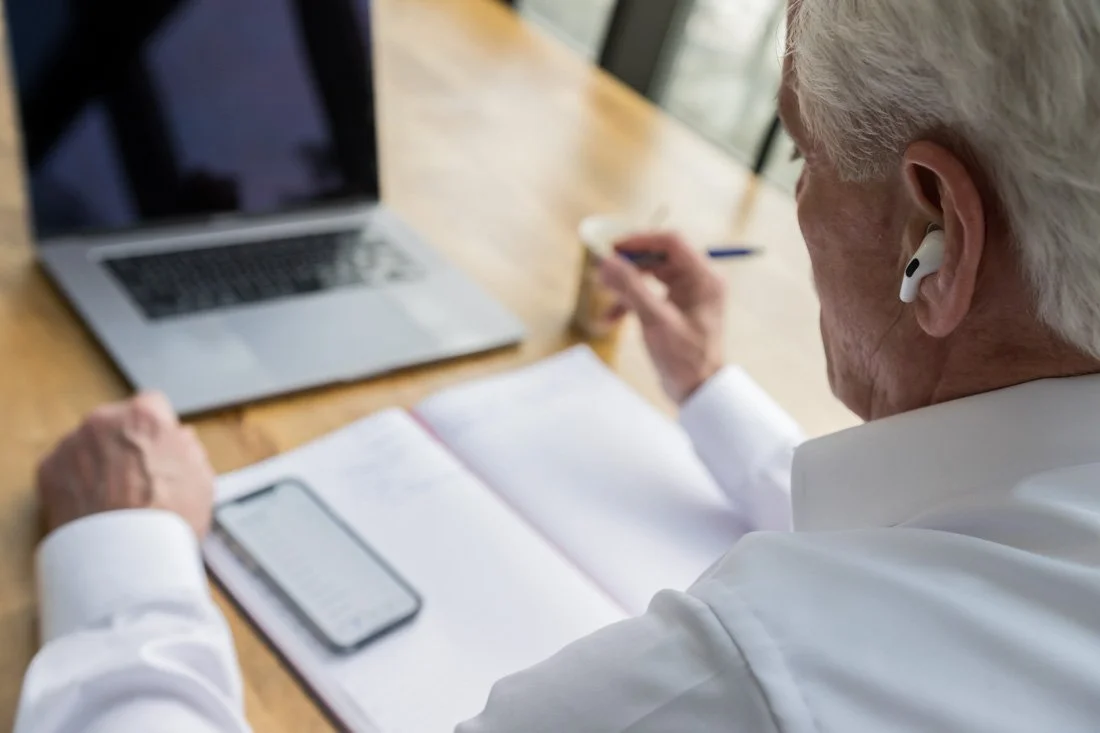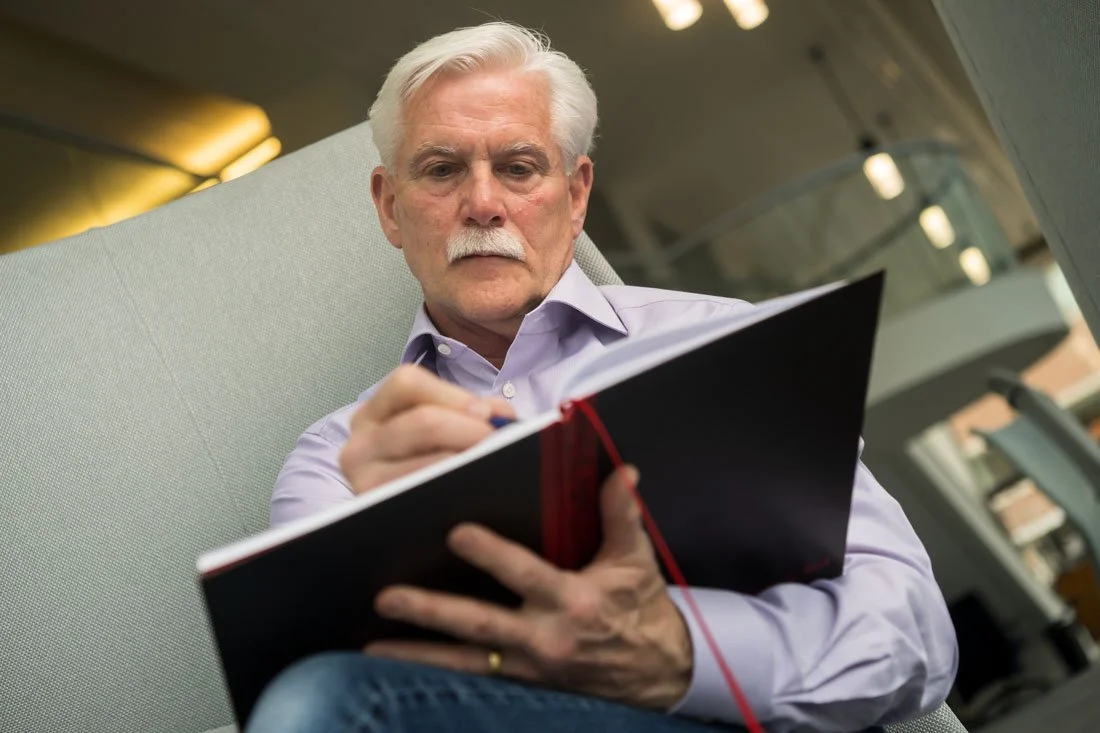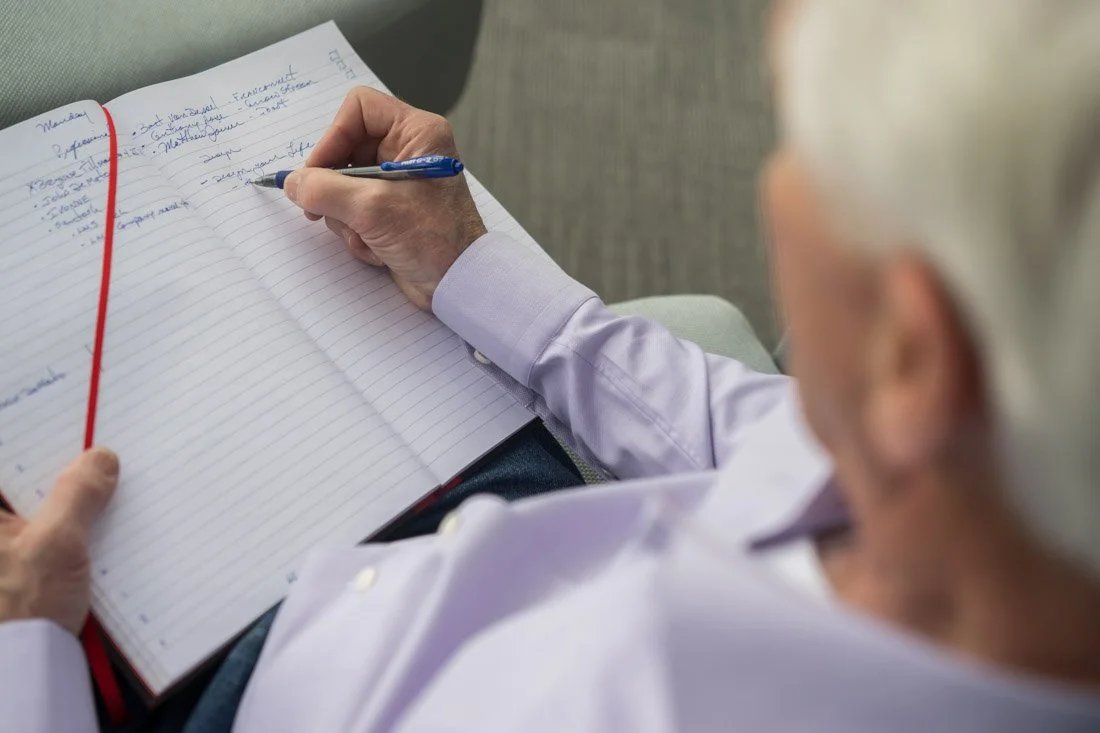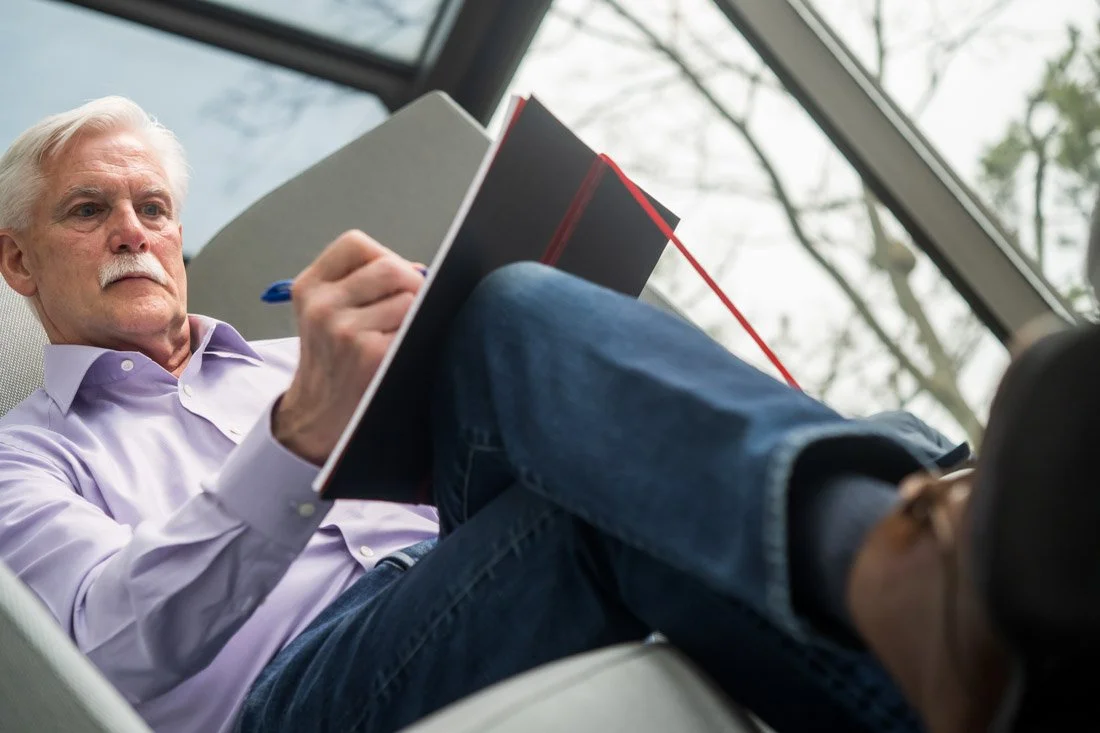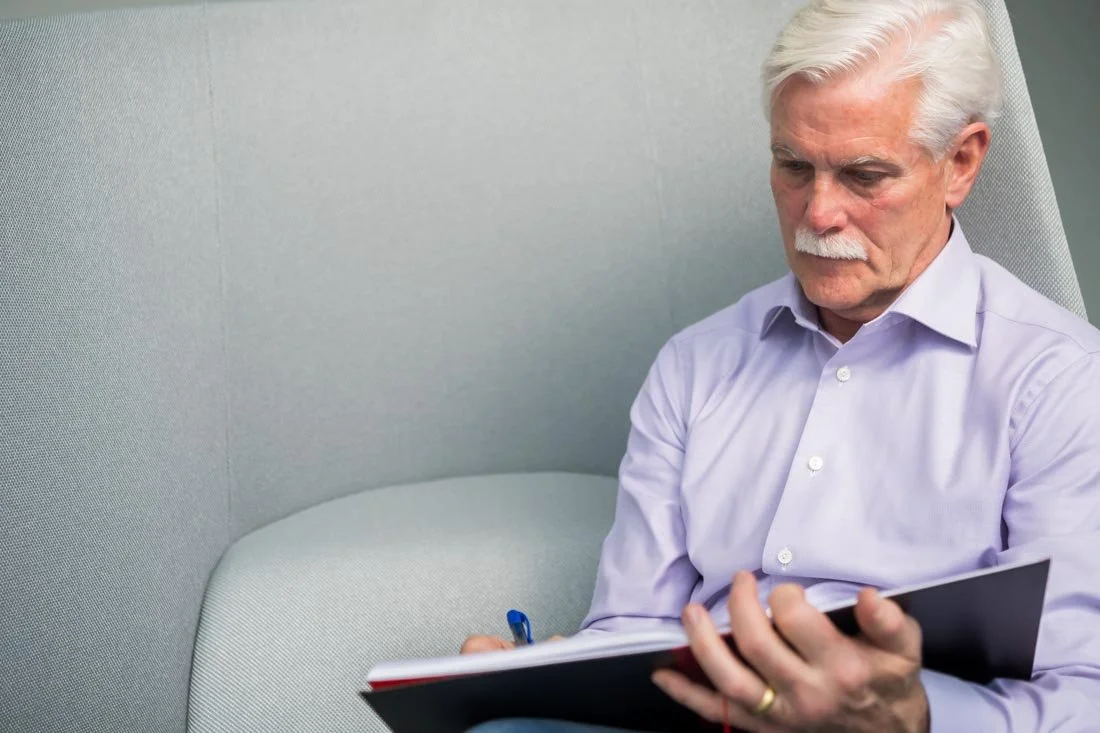Nothing beats the real thing
When it comes to creating visual assets…
…nothing beats the real thing.
As an expert, you’re in the business of building relationships with those you serve.
And the visual assets that you share across your entire online presence needs to support this nurturing process.
But how?
These photos help create an entry point for your audience to enter into your world to get a better sense of who you are and how you work.
Familiarity leads to connection, which, ultimately, leads to them trusting you enough to pay you money to help solve their problems.
Now, which types of photos achieve this?
Well, there’s a ton, honestly, but I was reminded recently of a specific type of lifestyle photo that helps to create this familiarity during a recent session:
Photos of you brainstorming ideas for your client work.
Now, everybody logs their ideas in different ways, and sometimes, more ways than one.
For my client, John, he prefers pen to paper. I found that out during our strategy call.
Since the session location was a co-working space, we had access to stacks of legal pads, notebooks and paper. He could’ve simply grabbed one off the pile, and that would’ve been fine.
Fine is good. But better is best.
The better approach is to ditch the stand-in prop and show your audience what it really looks like when you get down and dirty fleshing out insights, strategies and tactics.
John has a specific brand notebook that he’s been using for years.
He told me it serves two purposes: from the front cover to the middle is reserved for business ideas while the back cover to the middle is for personal use. When one side meets in the middle, it’s time to get a new one.
After hearing about this process, I immediately told him to bring his latest copy as it clearly is a huge part of his creative process.
When it came time to capture lifestyle portraits of him working, I made sure to place the book in the shot in all of the ways in which he captures ideas by himself, as well as on calls with clients:
While it may seem like a trivial detail, it’s important to remember that the devil is in the details.
When you incorporate actual materials that you use on a daily basis to support the work you do, the images become more familiar to you. The more familiar they are, the more likely you will use them.
And your audience will have an accurate assessment of what it’s like to work with you. And who knows, maybe they use the same types of materials with you, which creates an additional level of familiarity with them.
All good things, no?
Keep this in mind the next time that you book a lifestyle portrait session…
…after all, nothing beats the real thing :)
For more information on visual storytelling strategies for Experts, I talk about it all the time on my blog. Sign up here to save yourself the commute of going to my website to read them :)


